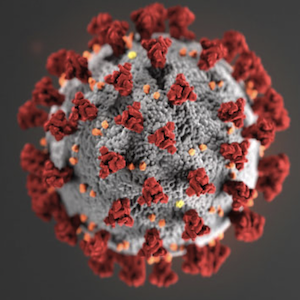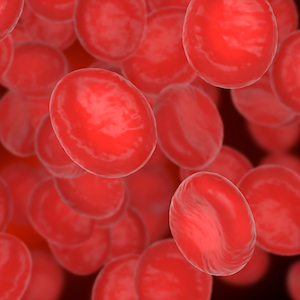A re-appraisal of thrombogenesis in COVID-19, seen as a multiple "Complex system"

Submitted: 27 July 2022
Accepted: 5 September 2022
Published: 24 October 2022
Accepted: 5 September 2022
Abstract Views: 1599
PDF: 234
Publisher's note
All claims expressed in this article are solely those of the authors and do not necessarily represent those of their affiliated organizations, or those of the publisher, the editors and the reviewers. Any product that may be evaluated in this article or claim that may be made by its manufacturer is not guaranteed or endorsed by the publisher.
All claims expressed in this article are solely those of the authors and do not necessarily represent those of their affiliated organizations, or those of the publisher, the editors and the reviewers. Any product that may be evaluated in this article or claim that may be made by its manufacturer is not guaranteed or endorsed by the publisher.
Similar Articles
- Giovanni L. Tiscia, Donatella Colaizzo, Antonio De Laurenzo, Filomena Cappucci, Lucia Fischetti, Elena Chinni, Mario Mastroianno, Giovanni Favuzzi, Massimo Carella, Elvira Grandone, Thrombin generation assay in COVID-19 patients shows a hypocoagulable pattern , Bleeding, Thrombosis and Vascular Biology: Vol. 3 No. 3 (2024)
- Bianca Clerici, Mariangela Scavone, Gian Marco Podda, Recent advances in classic heparin-induced thrombocytopenia (HIT), autoimmune HIT, spontaneous HIT, and vaccine-induced immune thrombotic thrombocytopenia , Bleeding, Thrombosis and Vascular Biology: Vol. 3 No. 2 (2024)
- Daniela Poli, Walter Ageno, Emilia Antonucci, Salvatore Bradamante, Eugenio Bucherini, Paolo Chiarugi, Antonio Chistolini, Benilde Cosmi, Anna Falanga, Antonio Insana, Domenico Lione, Rosa Maria Lombardi, Giuseppe Malcangi, Rossella Marcucci, Giuliana Martini, Lucilla Masciocco, Carmelo Paparo, Daniele Pastori, Simona Pedrini, Vittorio Pengo, Pasquale Pignatelli, Andrea Toma, Sophie Testa, Gualtiero Palareti, Management of anticoagulation in atrial fibrillation patients in Italy: insight from the Atrial Fibrillation-Survey on Anticoagulated Patients Register (AF-START) , Bleeding, Thrombosis and Vascular Biology: Vol. 2 No. 2 (2023)
- Nadim Tawil, Lata Adnani, Janusz Rak, Coagulome and tumor microenvironment: impact of oncogenes, cellular heterogeneity and extracellular vesicles , Bleeding, Thrombosis and Vascular Biology: Vol. 3 No. s1 (2024): 12th ICTHIC
- Anne Eichmann, The Lefoulon Delalande Foundation honors the lymphatic vascular system , Bleeding, Thrombosis and Vascular Biology: Vol. 2 No. 4 (2023)
- Francesco Cicconi, Ankle brachial index for the diagnosis of asymptomatic lower extremity peripheral arterial disease , Bleeding, Thrombosis and Vascular Biology: Vol. 3 No. 2 (2024)
- Federica Mancazzo, Antonia Vitulli, Lavinia Dirienzo, Concetta T. Ammollo, Fabrizio Semeraro, Mario Colucci, Influence of emicizumab on protein C-mediated clotting regulation , Bleeding, Thrombosis and Vascular Biology: Vol. 2 No. 4 (2023)
- Federica Azzolini, Antonio Bruno, Ettore Dolcetti, Diego Centonze, Fabio Buttari, Tumor necrosis factor superfamily in multiple sclerosis: from pathology to therapeutic implications , Bleeding, Thrombosis and Vascular Biology: Vol. 2 No. 2 (2023)
- Stefania Momi, Paolo Gresele, Blood platelets and Charles Darwin’s natural selection , Bleeding, Thrombosis and Vascular Biology: Vol. 2 No. 1 (2023)
- Boris Shenkman, Ivan Budnik, Yulia Einav, Interaction between adenosine diphosphate receptors and protein-kinase C isoforms in platelet adhesion under flow condition , Bleeding, Thrombosis and Vascular Biology: Vol. 2 No. 1 (2023)
You may also start an advanced similarity search for this article.

 https://doi.org/10.4081/btvb.2022.48
https://doi.org/10.4081/btvb.2022.48








